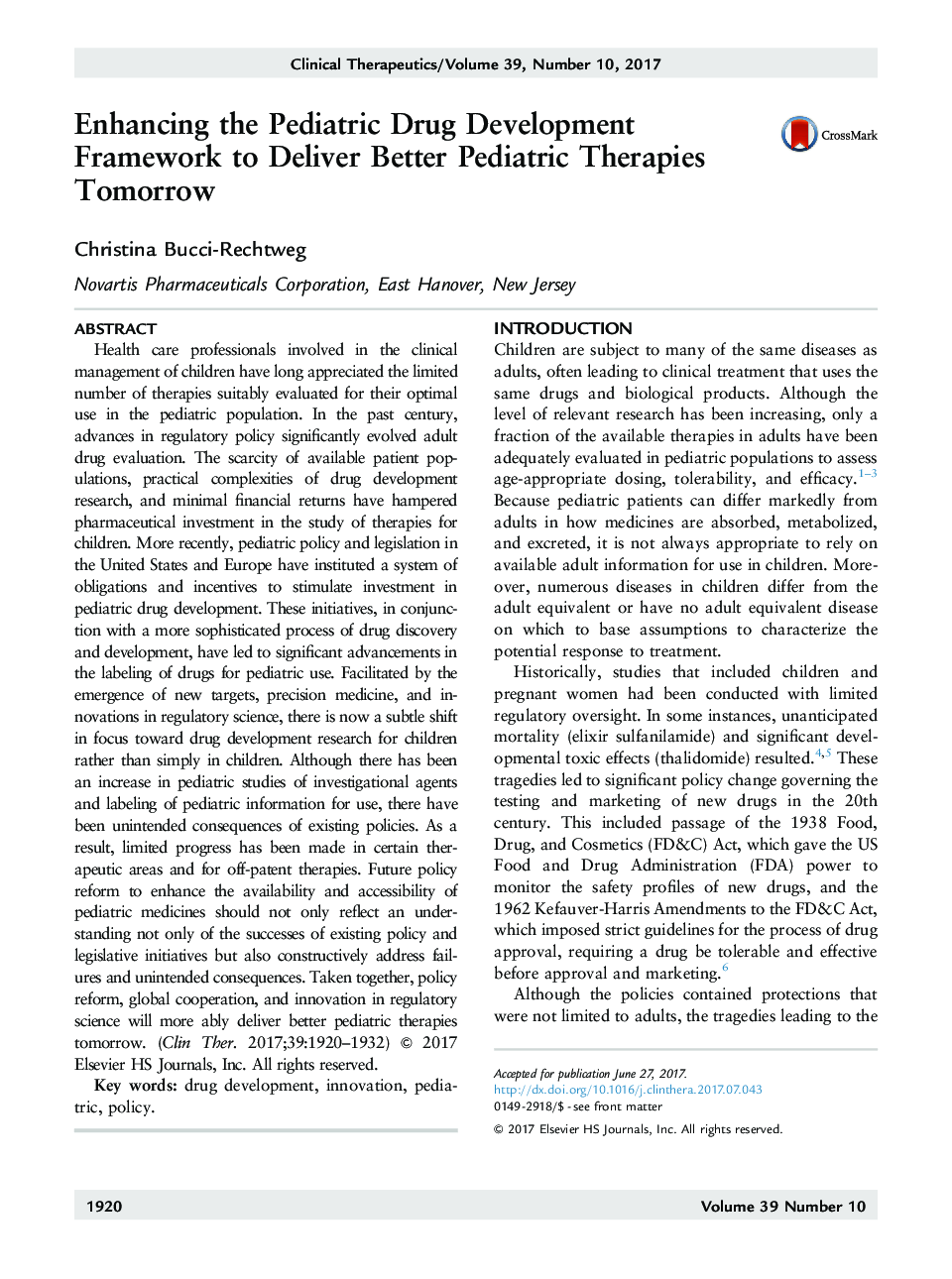| Article ID | Journal | Published Year | Pages | File Type |
|---|---|---|---|---|
| 8528451 | Clinical Therapeutics | 2017 | 13 Pages |
Abstract
Health care professionals involved in the clinical management of children have long appreciated the limited number of therapies suitably evaluated for their optimal use in the pediatric population. In the past century, advances in regulatory policy significantly evolved adult drug evaluation. The scarcity of available patient populations, practical complexities of drug development research, and minimal financial returns have hampered pharmaceutical investment in the study of therapies for children. More recently, pediatric policy and legislation in the United States and Europe have instituted a system of obligations and incentives to stimulate investment in pediatric drug development. These initiatives, in conjunction with a more sophisticated process of drug discovery and development, have led to significant advancements in the labeling of drugs for pediatric use. Facilitated by the emergence of new targets, precision medicine, and innovations in regulatory science, there is now a subtle shift in focus toward drug development research for children rather than simply in children. Although there has been an increase in pediatric studies of investigational agents and labeling of pediatric information for use, there have been unintended consequences of existing policies. As a result, limited progress has been made in certain therapeutic areas and for off-patent therapies. Future policy reform to enhance the availability and accessibility of pediatric medicines should not only reflect an understanding not only of the successes of existing policy and legislative initiatives but also constructively address failures and unintended consequences. Taken together, policy reform, global cooperation, and innovation in regulatory science will more ably deliver better pediatric therapies tomorrow.
Related Topics
Health Sciences
Medicine and Dentistry
Medicine and Dentistry (General)
Authors
Christina Bucci-Rechtweg,
